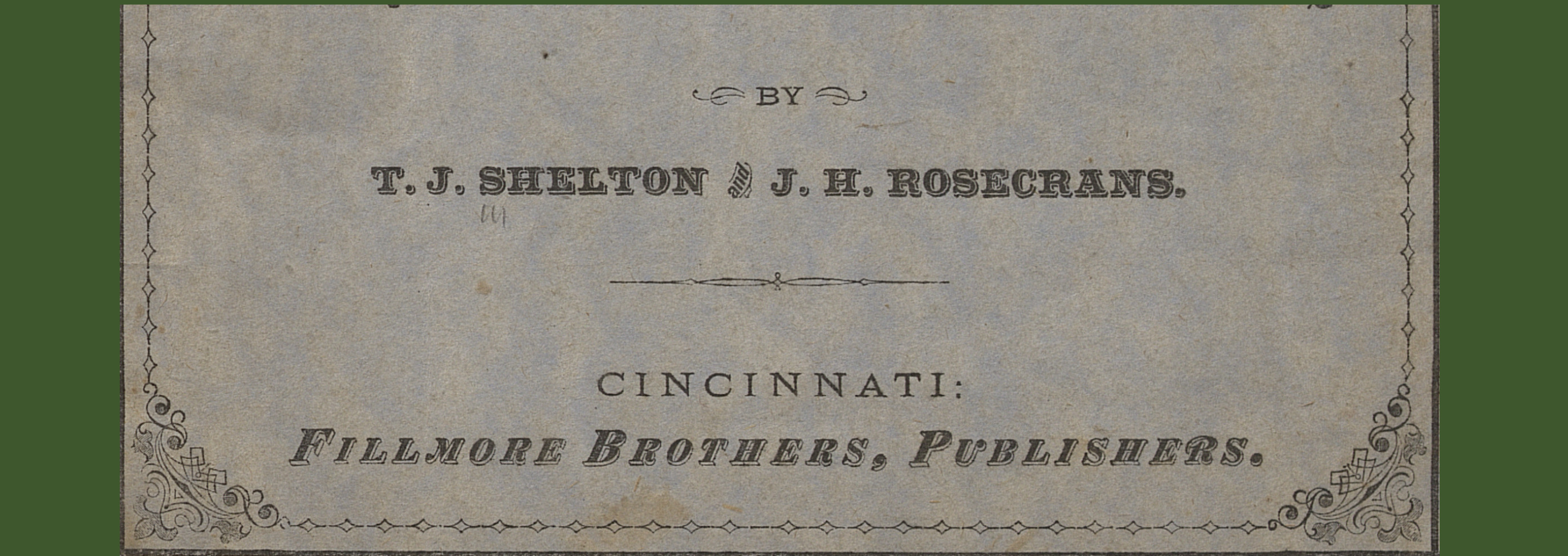
The Restorationist movement materialized in the US South in response to growing strife between fractious religious groups. Often traced to the preaching of Barton W. Stone (1772–1844) at an 1801 revival in Bourbon County, Kentucky, the movement initially cohered around an intentional decentering of denominational allegiance with Stone and others advocating for a restoration of the nonsectarian fellowship practiced in the first century Christian church. Restorationists preferred the title “Christian” over denominational affiliation. In its early years (pre-1850), the movement’s opposition to slavery nurtured religious communities with strong cross-racial participation. After joining forces with the similarly-minded Pennsylvania Christians led by Alexander Campbell (1788–1866), the Restorationists expanded their geographic reach. Campbell, who relocated to western Virginia in the 1810s, was the movement’s first and most influential hymnodist, although Restorationists also drew from Methodist and Baptist repertoire. In the 1860s, Restorationists began debating the use of instrumental music in worship, causing rifts between and within some congregations. Attitudes about musical accompaniment were the deciding factor when the movement formally split into two denominations in 1906. The non-instrumental Church of Christ would soon begin issuing official hymnals from their publication arm in Missouri and the Christian Church (Disciples of Christ) would publish hymnody intended to be accompanied from Texas. Even before this split, nineteenth-century Restorationists produced several collections of sacred music underwritten by charities, congregations, and individual devotees, like “The Christian Psalmist" (1851), compiled by Silas W. Leonard, A. D. Fillmore, William Gunn, and Thomas Harrison and published in Louisville, Kentucky. Now an international movement, Restorationist churches remain particularly prevalent in the South, especially along the Ohio Valley.
—Erin Fulton
Apostolic Hymns
- Author: Prof. Blackburn; J. V. Kirland; R. S. Kirlkand; A. M. Kirkland
- Published: ca. 1896–1898
- Publisher: Gospel Advocate Publishing Company?
- Publication City: Nashville, Tennessee; compiled in Pilot Oak, Kentucky, Fulton, Kentucky, and Como, Tennessee
- Added: April 26, 2020, 7:22 p.m.
Gospel Songs
- Author: W. D. Evridge and J. W. Acuff
- Published: 1909
- Publisher: Trio Music Company
- Publication City: Waco, Texas; Memphis, Tennessee
- Added: Jan. 27, 2020, 6:38 p.m.
Polished Pearls
- Author: T. J. Shelton and J. H. Rosecrans
- Published: 1876
- Publisher: Fillmore Brothers
- Publication City: Cincinnati, Ohio; compiled in Arcola, Illinois
- Added: Jan. 28, 2020, 4:46 p.m.